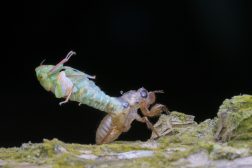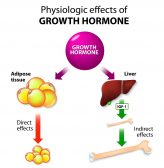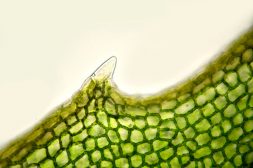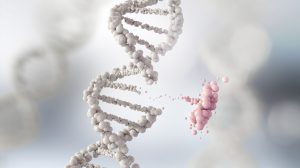
Growth
n., [ɡɹoʊθ]
Definition: the progressive development of an organism; maturation
Table of Contents
Growth Definition
What is growth in biology? Growth is the irreversible increase of an organism’s size over a given period. It may also be defined as one of the characteristics of a living thing. In biology, “biological growth” is associated with progressive development. An organism’s growth may go on throughout its life, or end when that species is fully mature. An example of biological growth is a plant seed developing into a fully mature tree. At a cellular level, cell growth means an increase in size or an increase in number. In medical science, growth may be associated with pathology (disease). For example, pathological growth may indicate a tumor, which is an abnormal mass of cells or tissue.
A growth is the irreversible increase of an organism’s size over a given period. Synonym: development; maturation.
The Process of Growth
Living things tend to grow throughout their lifespan. However, it is a process that happens periodically and in stages. Growth usually commences with the presence of a singular cell. This cell may multiply and grow larger in specific regions like in plants or it may diversify and growth will be located in various parts of the organism, as seen in animals. Many factors including environmental and internal ones determine how quickly or how slowly an organism will grow. Centuries of change in these factors have influenced how living things develop and grow to this day.
Types of Growth
What are the types of growth in biology? There are three (3) general types of growth that are considered in biology. They are:
- Growth in cells
- Growth in plants
- Growth in animals
In cells
Cells grow when they become larger in mass and physical size. Cell growth is the building block of all organisms’ growth because all living things are made up of cells. Often, cells multiply by the process of mitosis, which is a form of cell growth that splits the parent cell into two genetically identical daughter cells. Almost all cell growth involves the process of mitosis. It replaces old and ill cells with better ones. Mitosis is the way through which multicellular eukaryotes can grow by producing new cells that may differentiate and acquire specific roles in the body. This type of cell growth however does not occur in monerans – also known as prokaryotes – as they are unicellular organisms. Rather, due to the size of the cell, it must reproduce through the process of simply splitting or binary fission. This growth pattern is less complicated for these cells that do not contain organelles and hence their cellular organization is not as complex as those of the eukaryotic cells.
In plants
In plants, where does growth occur? The growth occurs in mitotically active regions. This is when the stem and root become longer or new parts of the plant develop. Both cell division and growth contribute to the way plants increase in size. The cell growth will make the plant larger while the division will contribute to the number of cells the plant will contain. Some cells in the plant will specialize and be used for different tasks within the plant; this is cell differentiation. However, the cells that remain undifferentiated are those that play a larger role in the plants’ growth, allowing them to continue to divide.
These undifferentiated cells are found in the meristems (See Figures 1 and 2). The meristem permits the stem and roots to continue to extend so that the organism can grow. This is called primary growth. Secondary growth occurs when there is lateral cell division in the meristem, which causes an increase in the girth of the thickness of the plant.

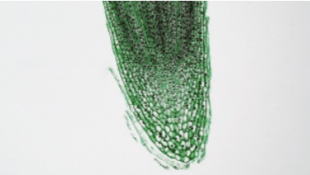
In animals
For animals, the process of growth differs from that of plants. For instance, unlike plants, cell division and growth are not located in centralized places but rather spread out within the animal. The growth and division of cells also vary in speed when it comes to animals as well. The growth of these cells, in turn, encourages tissue formation, which then leads to organ formation. Organs create organ systems and so construct an organism. Animals usually grow in stages that can be classified as embryonic, juvenile and then adult (see Figure 3). The adult stage in the life cycle tends to have little to no growth whereas most development occurs in the embryo stage. This general growth process is quite common in most animals.
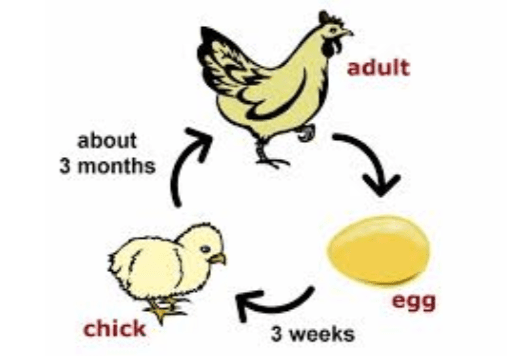
Factors that Regulate Growth
Growth, like all the characteristics of living things, requires regulation to occur. Numerous different factors permit the process of growth to occur. For instance, if anything in the environment is not at its optimum this will either hinder or excessively speed up the growth of an organism. These physical factors can also give rise to different forms of certain structures. Plants that undergo extreme physical stress such as drought will eventually wither from lack of water. On the other hand, leaves grown in the air have a different physical shape from those grown in water for the buttercup plant. The ideal temperature is also necessary for all living things as most mammals would suffer from hypothermia in conditions that are too cold.
Within organisms, there are also internal factors that can promote or inhibit their growth. This is often what the organism possesses in its gene pool and it can result in either regular or abnormal growth in a living thing. Hormones – those regulatory stimulants which activate the body into performing certain actions – determine the speed, size, and physical trait the organism will develop in its system. These can even determine the likelihood of the organism to survive and its lifespan. For instance, the pituitary growth hormone has a massive effect on the speed at which mammals grow. A pig that is injected with the growth hormone will not only grow quicker than the ordinary pig but will also be leaner and require less food.
The Dynamics of Growth
Measuring growth has been proven a tedious task throughout the years of biology as no two organisms grow the same. Mass and volume are the methods used to assess the growth of living things. Mass is easier to measure than volume whereas volume will give a more accurate measurement of growth. Cellular growth can be tracked through mass or dry mass but preferably using volume. Dry mass, however, is the ideal way to measure small, herbaceous plants. Nonetheless, scientists must take precautions when using mass for small plants as their water content often varies. More massive plants like trees will use the metric of volume to be measured. Typically, mass is used to measure the average animal as it is a simple method for these often motile and restless beings.
Development biology is the study of how organisms grow and develop throughout their lifespans. This field continues to delve into the various ways organisms grow and develop and explore new ideas and discoveries. Just recently the study of hox genes in Drosophila, commonly known as fruit flies, has helped with the mislocation defect in organs on vertebrates. This and many other examples can show just how the study of body growth can help with further research and discovery in biology.
Growth Examples
Cells can grow in numerous ways. When there is no cell division yet the cell persistently replicates DNA, the cell size will increase. This is called endoreplication and the platelet-producing cells of the bone marrow (megakaryoblasts) undergo this method of cell growth. On the other hand, their cells grow without making more DNA molecules. Cells like these grow to a point that enables them to carry out their specific tasks and rarely divide. To do this, these cells must regulate their environmental factors constantly so that they may not increase in size and frequency. This is often seen in neuron and cardiac muscle cells.
From seed germination to senescence, a plant goes through an interesting life cycle for growth. A prime example of primary growth in plants can be seen in the “Christmas” conical tree shape. These trees generally have a rapid division at the shoot and root tips. When their tips (apical buds) are removed, it results in the tree growing outwards, giving the tree a “fuller” appearance.
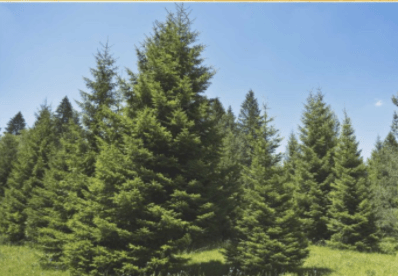
Secondary growth is often less noticeable in plants especially in trees since they take very long periods to grow in that manner. However, a simple look at the rings of the trunk of trees indicates years of secondary growth within the organism. For many trees, each circle ring indicates a year of growth for that plant.
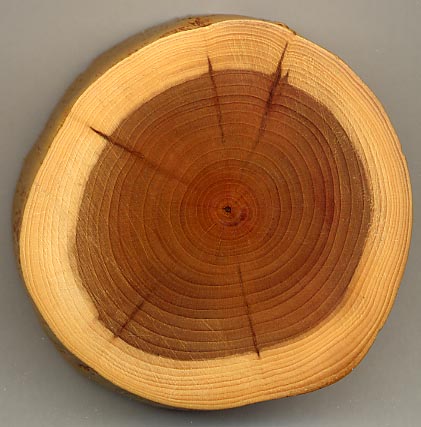
Animal growth can be looked at in the general, physical sense of the organism or the specialized cells. Muscle, nervous and reproductive cells all grow and differentiate within animals to carry out their specific functions.
When a structure is fully grown, those cells will also cease development unless that structure is injured. For instance, the ear of a cat will remain the same size once that animal reaches adulthood. That ear will only grow if it is slightly damaged, a fully severed ear cannot regenerate.
Generally, all animals will increase in physical size during their life journey. These changes are usually supported by hormones within the body produced in hormone-synthesizing glands. These are secreted into the bloodstream and transported to the necessary parts of the body.
In metamorphic vertebrates, there is a hormone called T3 that initiates the development of structures, rearrangement of organs, and other activities throughout the metamorphosis stage. Amphibians go through this type of growth.
Try to answer the quiz below to check what you have learned so far about growth.
Further Reading
References
- Briske D.D., (1986) Chapter 4- Developmental Morphology and Physiology of Grasses
- CK-12. (2021). Plant Growth. Plant Growth. https://www.ck12.org/biology/plant-growth/lesson/Plant-Growth-BIO/
- Guertin, A. D., Sabatini, D. M.. (2008). Cell Growth The Molecular Basis of Cancer (Third Edition).
Larkins, E. C., & Harris Jr, J. S. (1995). Quality gaas and aigaas. Molecular beam epitaxy: applications to key materials, 114. - Lumencandela. (2021). PLant Growth, Biology Majors II. https://courses.lumenlearning.com/wmopen-biology2/chapter/plant-growth/
- Machlin L. J. (1976). Role of growth hormone in improving animal production. Environmental quality and safety. Supplement, (5), 43–55.
- Oregon State University. (2021). Environmental Factors Affecting Plant Growth. Gardening Techniques. https://extension.oregonstate.edu/gardening/techniques/environmental-factors-affecting-plant-growth
- Roderick, M. L. (2001). Measurement of Growth. Functional Ecology. https://besjournals.onlinelibrary.wiley.com/doi/full/10.1046/j.1365-2435.2000.00414.x
- Scanes, C. G. (2019). Animal Growth. Developmental Biology. https://www.sciencedaily.com/terms/developmental_biology.htm
- Science Daily (2021). Developmental Biology. Reference Terms.
https://www.sciencedaily.com/terms/developmental_biology.htm - Shy, T. L. (2021). Life Cycle. Science and Mathematics World. https://tls1659.wordpress.com/science/life-cycle/
- Terrier. C. (2021). What are Monerans?. Wise Geek. https://www.wise-geek.com/what-are-monerans.htm
- Toppr. (2021). Growth and it Phases. Plant Growth and Development. https://www.toppr.com/guides/biology/plant-growth-and-development/growth-and-its-phases/
- Wilt, F. H. (2018, December 3). Growth. Encyclopedia Britannica. https://www.britannica.com/science/growth-biology
©BiologyOnline.com. Content provided and moderated by Biology Online Editors.

